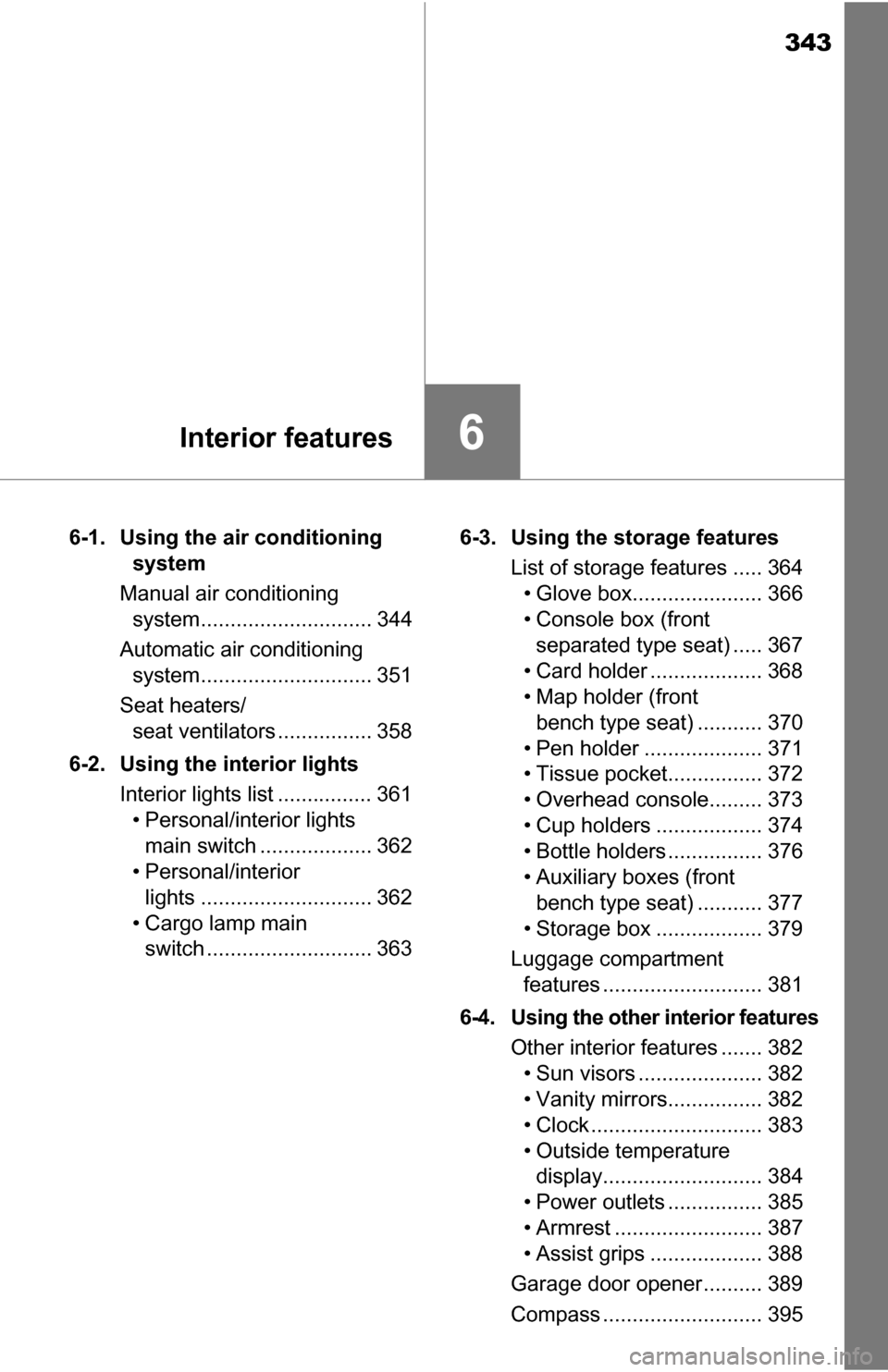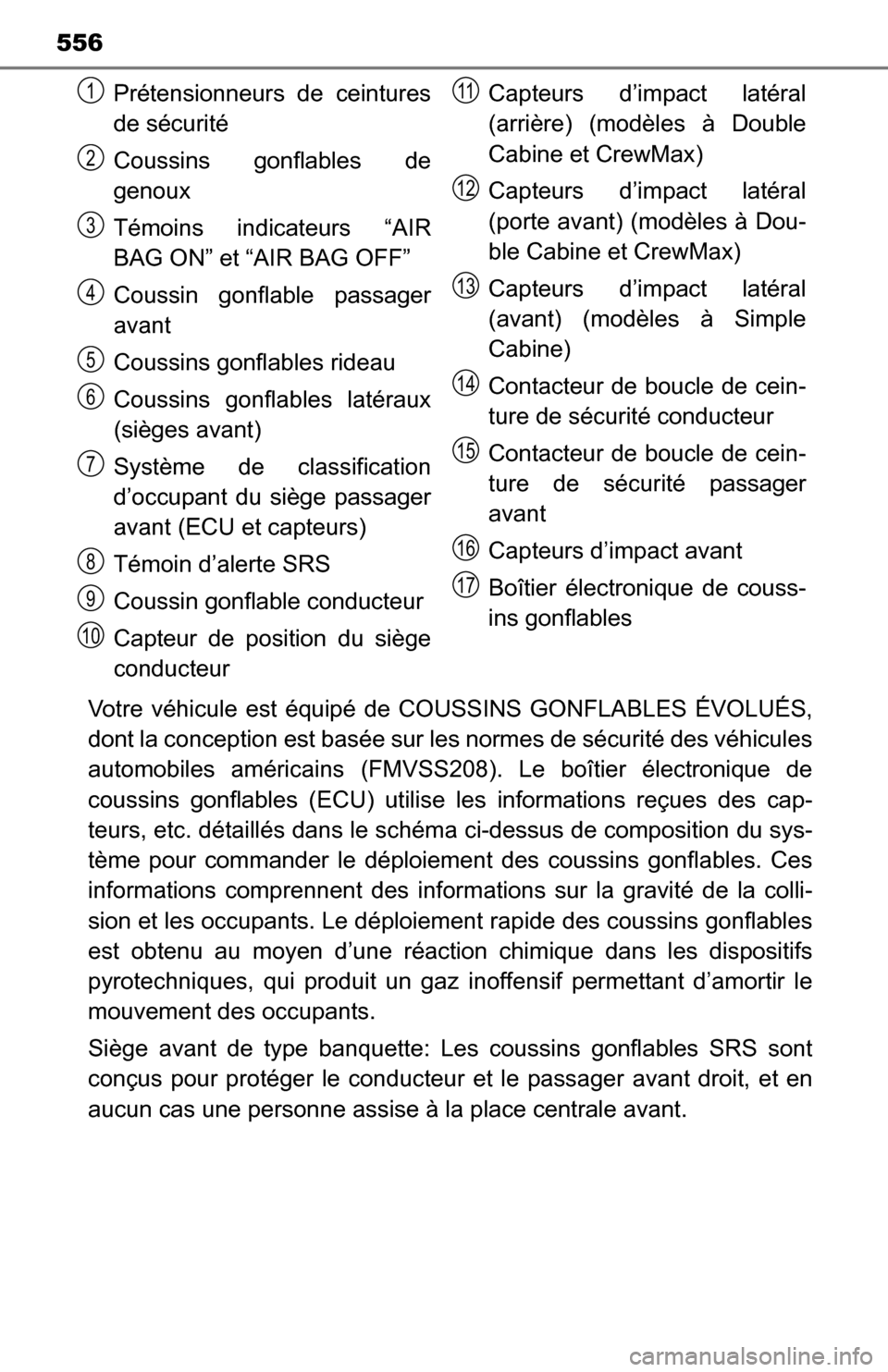Page 288 of 588

2885-7. Connecting Bluetooth®
■Certification
For vehicles sold in the U.S.A.
FCC ID: ACJ932YEAP01A727
NOTE:
This device complies with part 15 of the FCC Rules. Operation is subject to
the following two conditions: (1) This device may not cause harmful interfer-
ence, and (2) this device must accept any interference received, including
interference that may cause undesired operation.
FCC WARNING:
Changes or modifications not expressly approved by the party responsible
for compliance could void the user’s authority to operate the equipment.
CAUTION:
Radio frequency radiation exposure information:
This equipment complies with FCC radiation exposure limits set forth for an
uncontrolled environment.
This equipment should be installed and operated with minimum distance of
7.9 in. (20 cm) between the radiator and your body. This transmitter must
not be co-located or operating in conjuction with any other antenna or
transmitter.
FCC Warning:
Any unauthorized changes or modifications to this equipment would void
the user’s authority to operate this device.
For vehicles sold in Canada
NOTE:
This device complies with Industry Canada licence-exempt RSS stan-
dard(s). Operation is subject to the following two conditions: (1) this device
may not cause interference, and (2) this device must accept any interfer-
ence, including interference that may cause undesired operation of the
device.
Le présent appareil est conforme aux CNR d’Industrie Canada applicables
aux appareils radio exempts de licence. L’exploitation est autorisée aux
deux conditions suivantes: (1) l’appareil ne doit pas produire de brouillage,
et (2) l’utilisateur de l’appareil doit accepter tout brouillage radioélectrique
subi, même si le brouillage est susceptible d’en compromettre le
fonctionnement.
Page 343 of 588

343
6Interior features
6-1. Using the air conditioning system
Manual air conditioning system............................. 344
Automatic air conditioning system............................. 351
Seat heaters/ seat ventilators ................ 358
6-2. Using the interior lights Interior lights list ................ 361• Personal/interior lightsmain switch ................... 362
• Personal/interior
lights ............................. 362
• Cargo lamp main switch ............................ 363 6-3. Using the storage features
List of storage features ..... 364• Glove box...................... 366
• Console box (front separated type seat) ..... 367
• Card holder ................... 368
• Map holder (front bench type seat) ........... 370
• Pen holder .................... 371
• Tissue pocket................ 372
• Overhead console......... 373
• Cup holders .................. 374
• Bottle holders ................ 376
• Auxiliary boxes (front bench type seat) ........... 377
• Storage box .................. 379
Luggage compartment features ........................... 381
6-4. Using the other interior features Other interior features ....... 382• Sun visors ..................... 382
• Vanity mirrors................ 382
• Clock ............................. 383
• Outside temperature display........................... 384
• Power outlets ................ 385
• Armrest ......................... 387
• Assist grips ................... 388
Garage door opener.......... 389
Compass ........................... 395
Page 365 of 588
3656-3. Using the storage features
6
Interior features
Front bench type seat
Auxiliary boxes (P. 377)
• Card holder ( P. 368)
• Map holder ( P. 370)
• Tissue pocket ( P. 372)
Bottle holders ( P. 376)
Card holder ( P. 368)
Overhead console ( P. 373) Glove box (
P. 366)
Front cup holders ( P. 374)
Pen holder ( P. 371)
Rear cup holders (if equipped) ( P. 375)
Storage box (if equipped) ( P. 379)1
2
3
4
5
6
7
8
9
Page 377 of 588
3776-3. Using the storage features
6
Interior features
Ty p e A
Pull the strap
Ty p e B
Pull the lever up and fold down
the seatback
Push the knob and lift the lid
Auxiliary boxes (front bench type seat)
1
2
Page 413 of 588
4137-3. Do-it-yourself maintenance
7
Maintenance and care
Hood
Pull the hood lock release lever.
The hood will pop up slightly.
Pull up the auxiliary catch lever
and lift the hood.
Release the lock from the inside of the vehicle to open the hood.
1
2
CAUTION
■ Pre-driving check
Check that the hood is fully closed and locked.
If the hood is not locked properly, it may open while the vehicle is in motion
and cause an accident, which may result in death or serious injury.
Page 428 of 588

4287-3. Do-it-yourself maintenance
■Tire types
●Summer tires
Summer tires are high-speed performance tires best suited to highway
driving under dry conditions. Since summer tires do not have the same
traction performance as snow tires, summer tires are inadequate for
driving on snow-covered or icy ro ads. For driving on snow-covered
roads or icy roads, the use of snow tires is recommended. When install-
ing snow tires, be sure to replace all four tires.
●All season tires
All season tires are designed to provide better traction in snow and to
be adequate for driving in most winter conditions as well as for use
year-round. All season tires, however, do not have adequate traction
performance compared with snow tires in heavy or loose snow. Also, all
season tires fall short in acceleration and handling performance com-
pared with summer tires in highway driving.
●Snow tires
For driving on snow-covered roads or icy roads, we recommend using
snow tires. If you need snow tires, select tires of the same size, con-
struction and load capacity as the or iginally installed tires. Since your
vehicle has radial tires as original equipment, make sure your snow
tires also have radial construction. Do not install studded tires without
first checking local regulations fo r possible restrictions. Snow tires
should be installed on all wheels. ( P. 243)
■If the tread on snow tires wears down below 0.16 in. (4 mm)
The effectiveness of the tire s as snow tires is lost.
■Situations in which the tire pressure warning system may not oper-
ate properly
●In the following cases, the tire pr essure warning system may not operate
properly.
• If non-genuine Toyota wheels are used.
• A tire has been replaced with a tire that is not an OE (Original Equip- ment) tire.
• A tire has been replaced with a tire that is not of the specified size.
• Tire chains, etc., are equipped.
• An auxiliary-supported run- flat tire is equipped.
• If a window tint that affects the radio wave signals is installed.
• If there is a lot of snow or ice on the vehicle, particularly around the wheels or wheel housings.
• If the tire inflation pressure is extremely higher than the specified
level.
Page 554 of 588
554
◆Coussins gonflables SRS frontaux
Coussins gonflables SRS conducteur/passager avant
Participent à la protection de la tête et du thorax du conducteur et
du passager avant contre les choc s avec les éléments de l’habita-
cle
Coussins gonflabl es SRS de genoux
Participent à la protection du conducteur et du passager avant
◆Coussins gonflables SRS latéraux et rideau
Coussins gonflables SRS latéraux
Participent à la protection du haut du corps des occupants des
sièges avant
Coussins gonfl ables SRS rideau
● Participent principalement à la pr otection de la tête des occu-
pants assis dans les sièges des places extérieures
● Peuvent empêcher les occupants d’être éjectés du véhicule en
cas de retournement de celui-ci
1
2
3
4
Page 556 of 588

556
Votre véhicule est équipé de COUSSINS GONFLABLES ÉVOLUÉS,
dont la conception est basée sur les normes de sécurité des véhicules
automobiles américains (FMVSS208). Le boîtier électronique de
coussins gonflabl es (ECU) utilise les inform ations reçues des cap-
teurs, etc. détaillés da ns le schéma ci-dessus de composition du sys-
tème pour commander le déploiement des coussins gonflables. Ces
informations comprennent des inform ations sur la gravité de la colli-
sion et les occupants. Le déploiem ent rapide des coussins gonflables
est obtenu au moyen d’une réaction chimique dans les dispositifs
pyrotechniques, qui produit un gaz inoffensif permettant d’amortir le
mouvement des occupants.
Siège avant de type banquette: Les coussins gonflables SRS sont
conçus pour protéger le conducteur et le passager avant droit, et en
aucun cas une personne assise à la place centrale avant.
Prétensionneurs de ceintures
de sécurité
Coussins gonflables de
genoux
Témoins indicateurs “AIR
BAG ON” et “AIR BAG OFF”
Coussin gonflable passager
avant
Coussins gonflables rideau
Coussins gonflables latéraux
(sièges avant)
Système de classification
d’occupant du siège passager
avant (ECU et capteurs)
Témoin d’alerte SRS
Coussin gonflable conducteur
Capteur de position du siège
conducteur
Capteurs d’impact latéral
(arrière) (modèles à Double
Cabine et CrewMax)
Capteurs d’impact latéral
(porte avant) (modèles à Dou-
ble Cabine et CrewMax)
Capteurs d’impact latéral
(avant) (modèles à Simple
Cabine)
Contacteur de boucle de cein-
ture de sécurité conducteur
Contacteur de boucle de cein-
ture de sécurité passager
avant
Capteurs d’impact avant
Boîtier électronique de couss-
ins gonflables
1
2
3
4
5
6
7
8
9
10
11
12
13
14
15
16
17